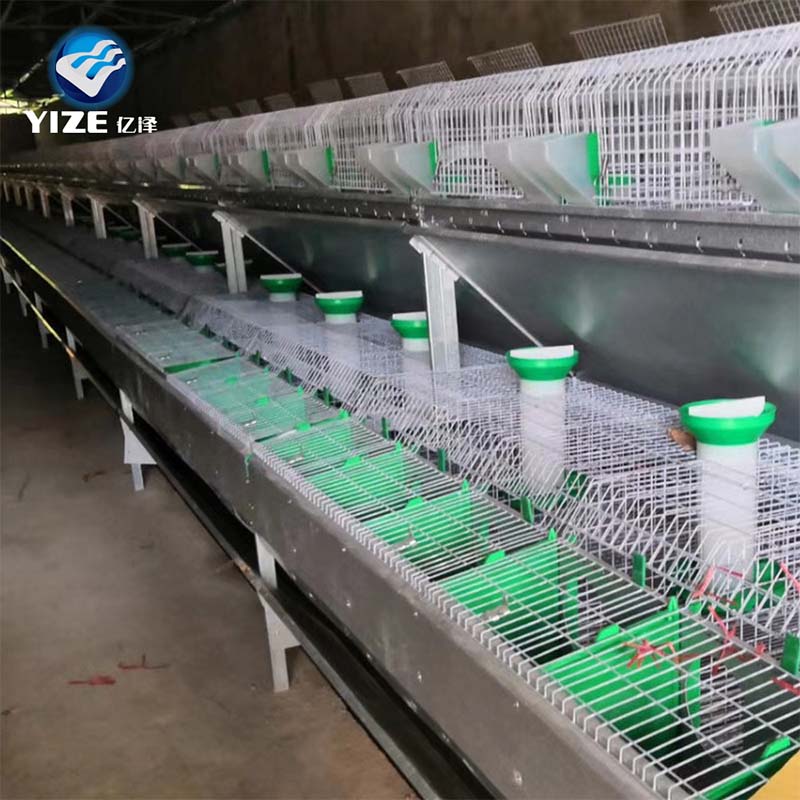farrowing pen for pigs
Nov . 11, 2024 15:55 Back to list
farrowing pen for pigs
Designing an Effective Farrowing Pen for Pigs
The farrowing pen is a crucial environment in pig farming, particularly for sows during the farrowing process. It is essential that farrowing pens are designed to meet the welfare of the mother and her piglets while also facilitating management practices for farmers. An optimal farrowing pen should ensure the safety, comfort, and health of all involved. In this article, we will explore the key elements of an effective farrowing pen, focusing on size, structure, comfort, and management practices.
Size and Space
The size of the farrowing pen is vital for both the sow and her piglets. A standard farrowing pen should typically measure around 2.0 meters in width and 2.5 meters in length, although variations may exist depending on the size of the sow and her breed. There needs to be enough space for the sow to move comfortably and lie down without risk of crushing her piglets. The design should also incorporate a creep area where piglets can retreat from the sow when necessary, giving them a safe spot to rest and nurse.
Structure and Design
The structure of a farrowing pen must prioritize safety and convenience. Solid walls can be beneficial in providing a secure space for the sow while minimizing stress caused by visual stimuli. The use of a slatted floor is often recommended to improve hygiene and facilitate manure management. However, special attention must be given to the floor’s design to prevent piglet injuries, such as using lighter or more resilient materials for the surface.
A well-designed farrowing pen will include a rear panel that can be adjusted or removed. This allows for easier access to the sow and piglets, facilitating the monitoring of health after farrowing. Additionally, incorporating a corner feeder can promote even food distribution and reduce competition for food among the pigs, leading to a calmer environment.
Comfort and Environment
farrowing pen for pigs

Comfort is a key factor in promoting the well-being of sows in farrowing pens. The installation of bedding materials, such as straw or sawdust, can offer a warmer and more cushioned area for the sow to rest and deliver her piglets. Adequate bedding also helps to absorb moisture and minimize odors, contributing to a healthier living environment. However, it is important to manage bedding well to avoid over-soiling and deterioration of hygiene conditions.
Loftiness in temperature management is another critical component to consider. Sows are sensitive to environmental changes, so maintaining appropriate temperatures in the farrowing pen—ideally between 20-22°C—is important for the comfort of the sow and her piglets. Heat lamps can be utilized to provide warmth to piglets, especially in the initial weeks after birth when they are most vulnerable to temperature fluctuations.
Management Practices
Effective management practices within farrowing pens can significantly impact outcomes in terms of health and productivity. Regular monitoring of the sow and her piglets is essential, particularly during the farrowing period. Farmers should maintain detailed records of farrowing dates, litter sizes, and any health issues observed, as this can inform future breeding and management decisions.
Hygiene practices must also be prioritized to prevent disease outbreaks. Cleaning and disinfecting farrowing pens before and after occupancy can minimize pathogens and create a healthier environment. Maintaining biosecurity measures is vital in protecting the herd, and ensuring that feeding and water systems are regularly cleaned can contribute to both productivity and welfare.
Conclusion
In conclusion, the design and management of farrowing pens are crucial components of successful pig farming. An effective farrowing pen takes into consideration the needs of the sow and her piglets by providing adequate space, appropriate structures, comfort, and proper management practices. By investing in well-designed and well-maintained farrowing pens, farmers can enhance animal welfare and subsequently improve productivity and efficiency within their operations. Prioritizing the health and comfort of sows not only supports their well-being but also lays the groundwork for healthy piglets and a more successful farming enterprise.
-
Hot Sale 24 & 18 Door Rabbit Cages - Premium Breeding Solutions
NewsJul.25,2025
-
Automatic Feeding Line System Pan Feeder Nipple Drinker - Anping County Yize Metal Products Co., Ltd.
NewsJul.21,2025
-
Automatic Feeding Line System Pan Feeder Nipple Drinker - Anping County Yize Metal Products Co., Ltd.
NewsJul.21,2025
-
Automatic Feeding Line System - Anping Yize | Precision & Nipple
NewsJul.21,2025
-
Automatic Feeding Line System - Anping Yize | Precision & Nipple
NewsJul.21,2025
-
Automatic Feeding Line System-Anping County Yize Metal Products Co., Ltd.|Efficient Feed Distribution&Customized Animal Farming Solutions
NewsJul.21,2025






